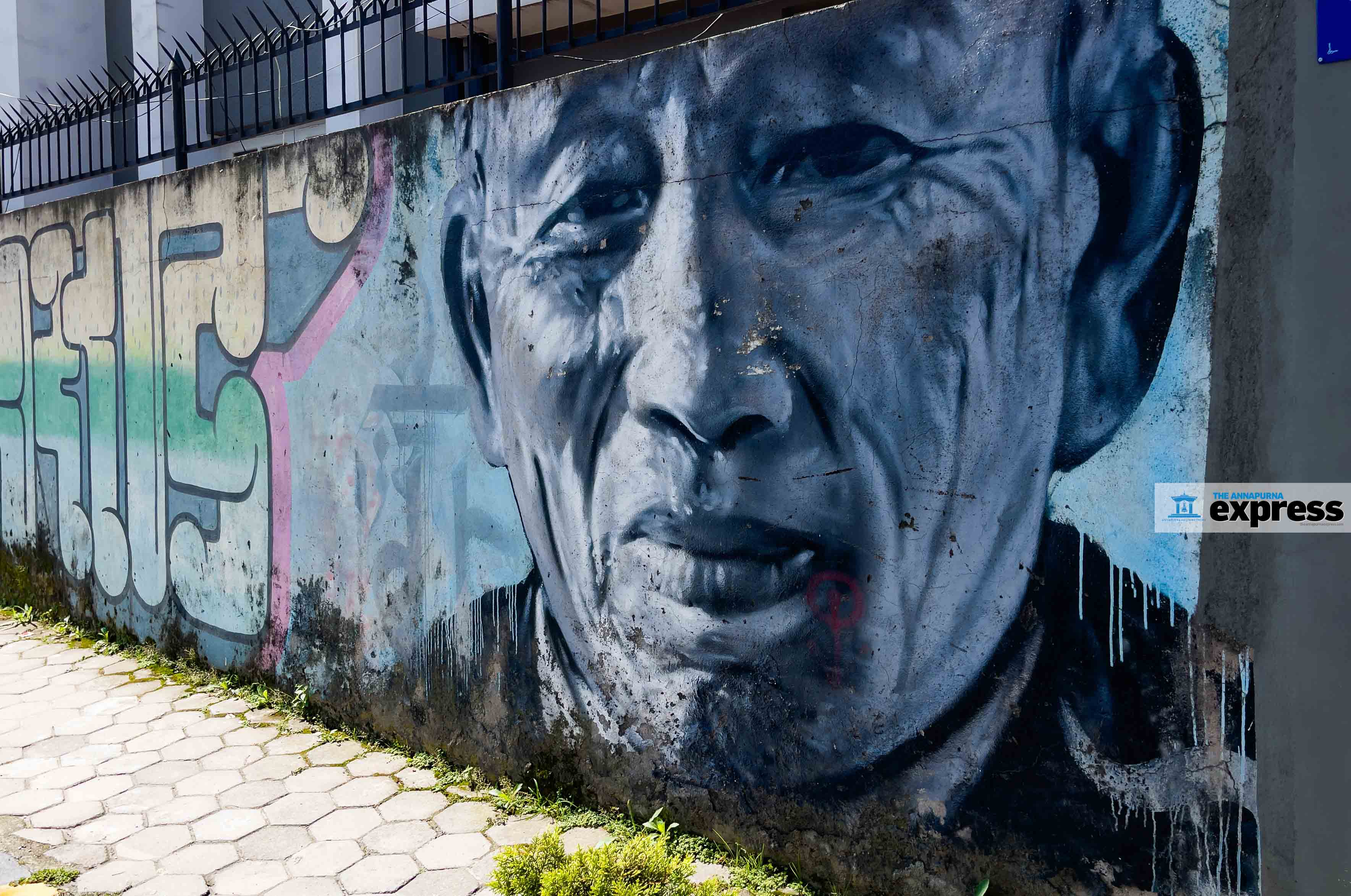The incredible Lamjung! (With Photos)
It’s fascinating how a photograph steals a moment of our life and turns it into a nostalgic memory. That happened when, in Nov 2022, Raju, my cycling partner, and this scribe set upon an epic cycling journey to Manang—our ultimate goal to accomplish the formidable Annapurna Circuit.

The Annapurna Circuit traverses across rugged terrain from Beshisahar with as low an elevation of 750m to gain altitude to a whopping 5,416m (Thorang La pass), crossing Manang to Mustang and culminating at Beni, Myagdi, encompassing 230km. Day one on our itinerary was Syange, some 30-odd kilometers from Beshisahar, Lamjung.

Following almost an eight-hour choppy ride in a micro-van from Kathmandu to Besisahar and our anticipation running riot, we began our bike ride early the next day. We learned we had to navigate across the Lamjung district, almost halfway to Manang. And Lamjung seemed poised to dish out unparalleled Nature’s bounty.

Barely had we left behind the buzzing and bustling city of Besisahar, the landscape opened up with a rustic countryside punctuated by pockets of small settlements, extensive farmland, and verdant scrub forest dotting the hills. The rumbling Marshyandi kept us company, our eyes virtually glued to the tumbling river. Total bliss!

And, to our ecstasy, the snow-capped peaks in the northern-western skyline beckoned us with open arms as we pedaled past brutal climbs and shredded down thrilling downhills. But what swept our feet away was the untold massive waterfalls that crossed our path almost the entire way to Syange. We could swear by the bio-diverse Lamjung—hands down—that stood apart simply incredible!
Timeless beauty of Bhaktapur Durbar Square
Bhaktapur Durbar Square is a historic center of the ancient city that holds a tremendous cultural, historical, and architectural significance. Located in the heart of Bhaktapur, it is a UNESCO World Heritage Site and one of the three squares in the Kathmandu Valley.

During the medieval period, it served as the seat of power for the Malla kingdom. The area is well-known for its breathtaking historic architecture, which includes palaces, temples, courtyards, and sculptures.

These structures represent Nepal's rich creative and architectural heritage. Some of the major attractions within the squares are the 55-window Palace, Nyatapole temple, Vatsala temple, and Dattatreya temple.

This morning I decided to take a tour around the square. As I walked in, I noticed women dressed in the traditional Newari attire ‘Haku Patasi.’ With their offerings in hand, they were all walking toward a temple. I could also hear men chanting Hindu devotional songs (bhajan) to the beats of their traditional musical instruments.

After I parked my vehicle, I started walking, observing the local vendor market.The place was buzzing with people, many of them shopping for groceries from local vendors. Around the square, there were numerous shops and stalls filled with handicrafts, paintings, statues, and posters of Hindu deities.

The square is still undergoing renovation after being devastated by the 2015 earthquake. With the majority of the temples already restored, this important historical and cultural site has regained its old charm.


Colors of Kathmandu

An artist makes the wall his canvas at Mid-Baneshwor.

The wall art is a tribute to the family members the homeowner lost during the earthquake of 2015.

A portrait of late Satya Mohan Joshi in Kupondol.

Freak Street at Basantapur has a lovely mural of a Newar girl.

Mural of a girl on the wall of Hotel Summit, Kupondole.

Mural of a lion on a wall of a restaurant near the UN park in Lalitpur.

A wall art in Jwagal, Chakupat by Kaalo.101 in collaboration with Dalit Lives Matters-Nepal.

A man walks past a mural in Kupondol.
Honoring the spirit of giving
A festival called Pancha Dan, which means ‘Five Offerings’, is celebrated in the Mangal Bazaar area of Patan, Lalitpur, every year which is a testimony to the generosity and compassion of Buddhism. The act of giving is considered a way to accumulate merit and create positive karma. It’s also an opportunity to receive blessings from monks and nuns. The festival is also celebrated in other parts of Kathmandu Valley including the city, Bhaktapur, and Banepa.

Pancha Dan celebration is the act of giving five different things including rice grains, wheat grains, salt, money, and fruits. Communities join hands to provide for those who’ve devoted their lives to religion. Beyond material offerings, Pancha Dan is a time to share knowledge. Elders pass down teachings to the younger ones in the family, fostering interconnectedness.

As the day begins, the surrounding comes alive with melodious chants of Buddhist scriptures and vibrant prayer flags. Younger monks (vhikchu) circle the designated core area of Patan with copper bowls in their hands, receiving the offering from the devotees. Following this ritual, they dine together with their seniors inside a large hall.

Another aspect of the festivities involves the custom of hierarchical seating of grandfathers, referred to as ‘ajus’ in the Newari language. The eldest among them is honored with the title ‘Chakreshwor aju.’ Ajus are placed alternately in combination with people from the Shakya and Bajracharya communities. Devotees also line up to receive blessings from the ajus.






















